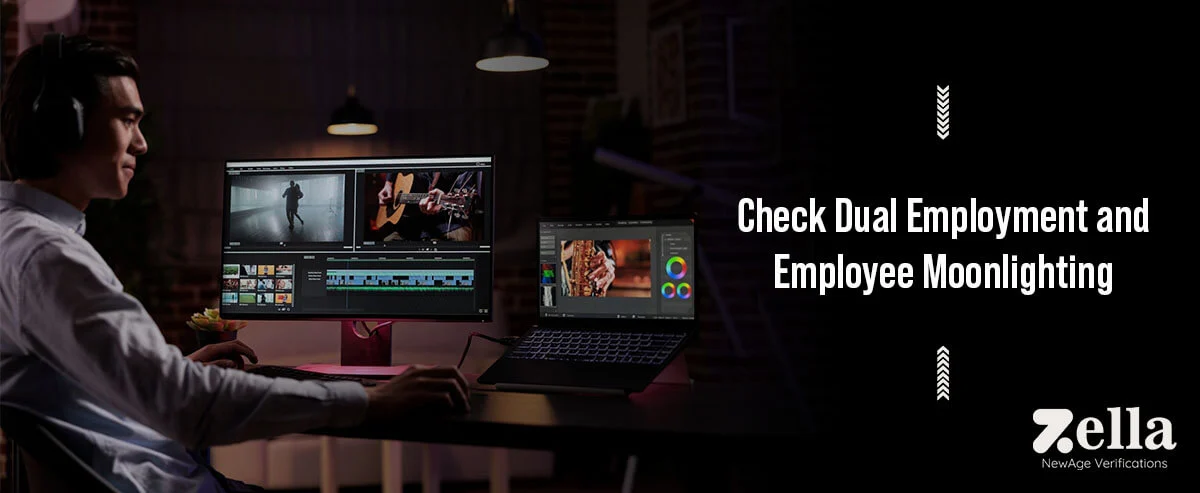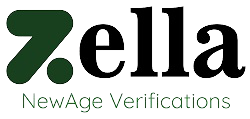
How to Find Dual Employment And Employee Moonlighting?
Keeping track of who works for your company and how much they’re getting paid can be a difficult task. What if you hire someone and find out months later that they’re moonlighting or working elsewhere as well? Are you an employer with concerns about employees who might be working a second job? People often juggle many careers. But it can pose risks for your business or employment if not managed correctly.
In this blog post, we’ll discuss how to check if your employees are dual-employed. We will also look at the risks and benefits of employee moonlighting. This will help you understand the importance of employment background screening and pre-employment screening.
What is Dual Employment?
Dual employment is when an employee holds two jobs simultaneously. Employee moonlighting is when an employee works a second job in addition to their primary job. Both of these situations can create conflict and strain the employee, as well as potential risks for the employer.
Therefore, it is crucial to correspond with the HR division. This allows you to see if there are any policies in place regarding such activities. Moreover, an employment background screening is best to avoid such situations.
What is Employee Moonlighting?
Employee moonlighting is when an employee takes on a second job, usually in the evening or at night. They do this in addition to their full-time job. This can be a way for employees to earn extra income. Still, it can also lead to conflicts of interest and potentially decreased productivity at their primary job.
Therefore, as an employer, it is important to run a pre-employment screening before hiring anyone. Furthermore, it’s essential to be aware of employees who may be moonlighting. This will help to have policies in place. These policies ensure that there are no conflicts of interest or decreased productivity.
How to check Dual Employment and Employee Moonlighting?
Dual employment can be difficult to track if you don’t know where to look. There are a few ways that employers can check to see if their employees are working a second job or moonlighting. The most common way is to check with the employee’s other employer or have an employment background screening done on the suspected individual. Many employers have policies against their employees working a second job.
So this is usually the best way to determine if an employee is working another job. Another way to check is to look at the employee’s pay stubs. If an employee is being paid by two different employers, it should be listed on their pay stub. Here are a few tips on how to check for dual employment:
1. Check social media accounts.
Many people list their employers on their personal social media accounts. So if you see that an employee has two jobs listed, there’s a good chance they are working both simultaneously.
2. Ask around.
Talk to other employees or managers who may have seen the person in question working another job. They may have even heard the person talking about it.
3. Check schedules.
Suppose an employee seems to be working odd hours or taking a lot of days off. It could be because they are working another job as well.
4. Look into financial records.
If an employee is getting paid more than they should be based on their position or hours worked, it could be because they are receiving income from another job as well. This step might require you to take the help of an employment background screening company.
If you suspect that an employee is working another job while they are employed with your company, it’s important to investigate further.
Benefits of Checking Dual Employment and Employee Moonlighting With Employment Background Screening
There are many benefits to checking Dual Employment and Employee Moonlighting. By doing so, you can avoid potential problems and issues that could arise. For example, if an employee is working two jobs and one of them is in a different field, they may not be able to commit to either job fully. This could lead to problems with productivity and quality of work.
Additionally, suppose an employee is working two jobs, and one is much higher paying than the other. In that case, there could be an issue arising. The employee may feel loyalty to the higher-paying job and less loyalty to the other job. This could lead to problems with job satisfaction and turnover.
Additionally, by checking Dual Employment and Employee Moonlighting with the help of an employment background screening, you can avoid potential legal issues. For example, consider an employee is working two jobs, and one of them is in a different state.
Then there could be issues with taxes. Or suppose an employee is working two jobs, and one of them is in a different country. In this situation, there could be immigration issues. Again, by checking Dual Employment and Employee Moonlighting, you can avoid these potential problems.
Conclusion
If you are an employer, it is vital to be aware of the potential for dual employment and employee moonlighting. There are some pros to letting employees work more than one job. But you should also be mindful of the possible cons. You should always take the time to check for double jobs and side jobs.
Consequently, you can help keep these risks to a minimum and ensure your business runs smoothly. Joining hands with pre-employment screening and employment background screening services will only help you further. In addition, by understanding the law and taking steps to check for these activities, you can help avoid potential problems down the road.

Leave a Comment